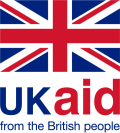You are here
Biodiversity
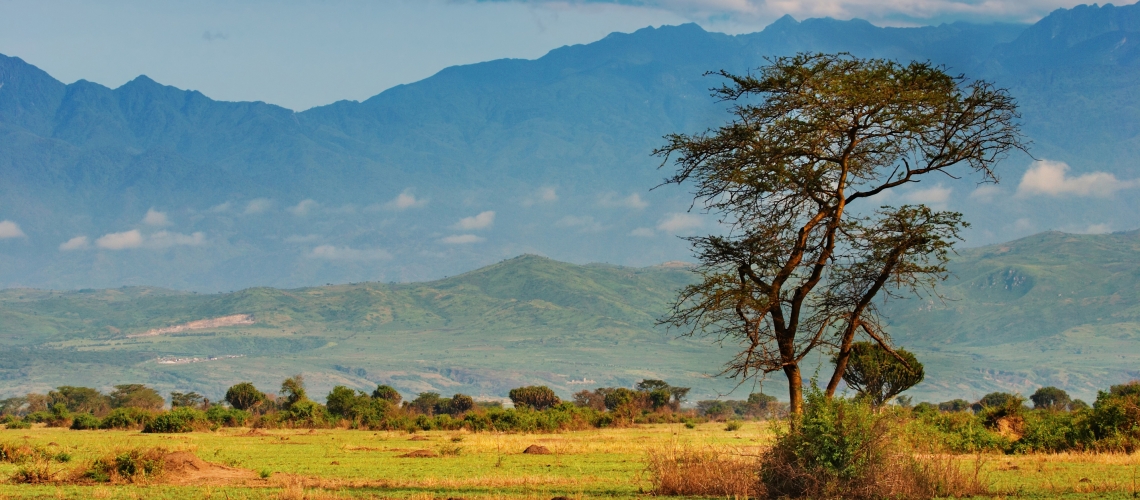
Planet REBOOT: An opportunity to reshape the world after COVID-19

This blog by Karin Erika Kemper was originally published on Voices.
For stories and updates on related activities, follow us on twitter and facebook, or subscribe to our mailing list for regular updates.
Last Updated : 06-26-2020

Road to Kunming: Economics and Finance for Biodiversity
PROGRAM SUMMARY
The development objective of this activity is to raise awareness among staff in ministries of finance and other sector ministries of WB client countries and among international financial sector stakeholders of the importance and opportunity of investing in biodiversity and ecosystem services sustainable management.
CHALLENGE
APPROACH
RESULTS
Event on “Invest in Nature” at IMF-WBG Annual Meetings 2019. The event was attended in person by ~200 people in the room, including ministers, international organizations and Bank leadership, and online by 575 people (of which 41.3 percent women). Most people who engaged online were 25-34 years old. Almost 18,000 people visited the event page. The event was the fourth most livestreamed event at the 2019 Annual Meetings (out of 19 livestreamed events). The event hashtag #InvestInNature reached more than 5 million Twitter users, generating 23.5 million impressions worldwide, and trending in DC area during the live event. On live engagement/comments, the event was rated 2nd out of 19 live-streamed events. Online, the event attracted strong engagement from key influencers, including Alok Sharna, UK, Zac Goldsmith, UK, Inger Andersen, UN Environment, IPBES, CBD.
China-WB workshop on “Maximizing private finance for biodiversity and ecosystem services”. Over the course of the two days, the workshop was attended by 67 (of which 26 women) representatives of the Chinese Government, notably from the Ministry of Finance and the MEE, and several other CBD Parties and the Secretariat, the European Commission, the financial sector, multilateral and bilateral development agencies, NGOs and academic experts. The workshop was attended at high level with two Director Generals (from Ministry of Finance and Ministry of Ecology and Environment). On the World Bank side, the event was attended by the ENB Global Director and by the EAP Regional Director.
It had been envisaged that the activities would contribute to inform the preparation of the post-2020 global biodiversity framework and in particular the policy mainstreaming and the resource mobilization dimensions of the framework. Through the dialogue in these activities the team was able to inform the preparation of the zero draft of the post-2020 global biodiversity framework. The participation of the UK at the Annual Meetings event was instrumental in engaging with that country on follow up action such as a possible collaboration with DEFRA on ecosystem policy modelling. On the finance side, the activity allowed to inform the work of the expert panel on resource mobilization for the post-2020 framework.
For stories and updates on related activities, follow us on twitter and facebook, or subscribe to our mailing list for regular updates.
Last Updated : 06-09-2020
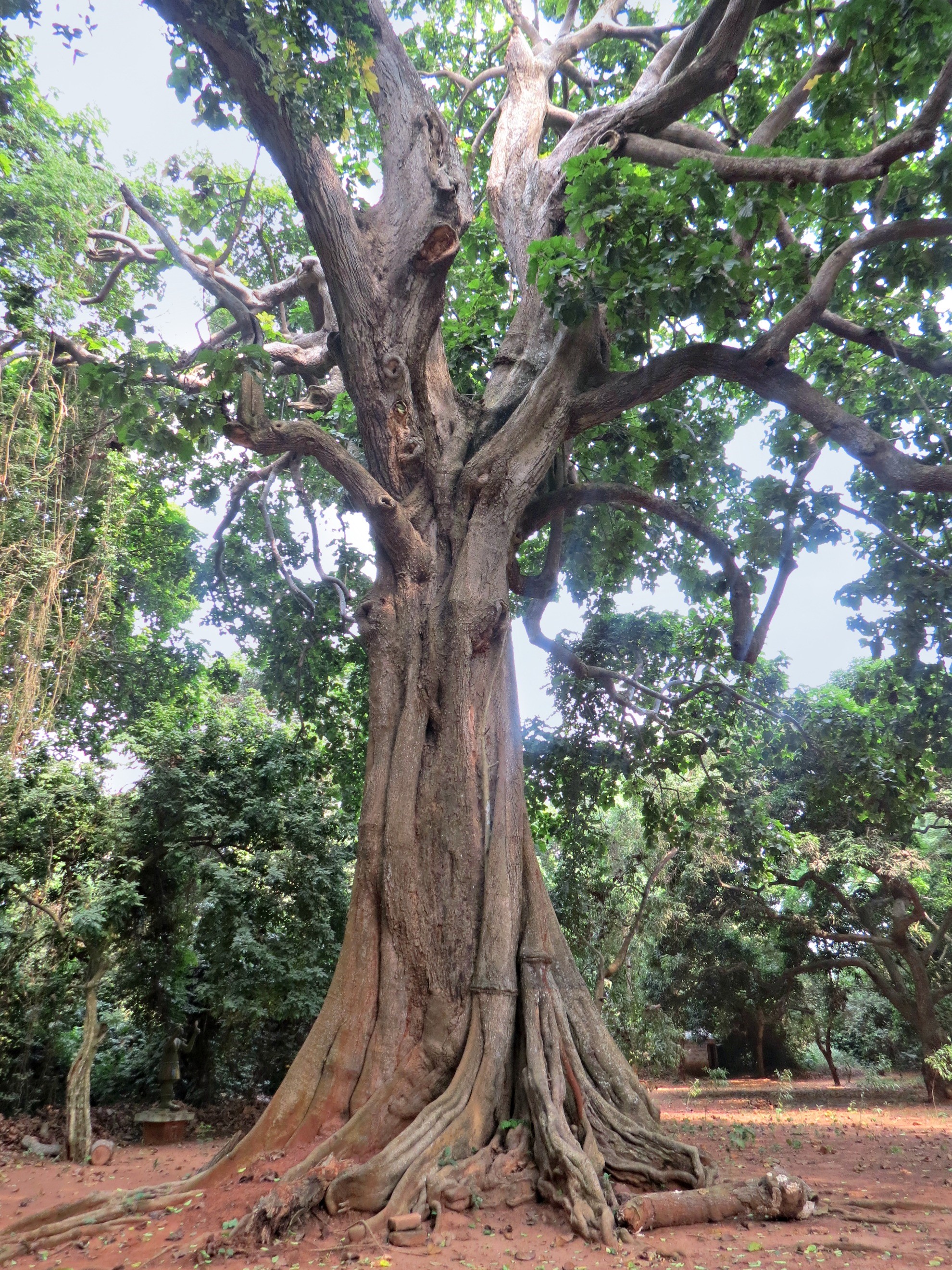
Assessing Benin’s productive forest sector
CHALLENGE
Despite efforts to establish protected areas and improve the planning and management of these areas, Benin’s forests are being degraded through slash-and-burn agriculture, demand for wood-based fuel, uncontrolled bush fires, and intensive animal grazing continues. Such activities undermine the essential ecological services that forests provide to populations. In a country where the forest sector contributes over six percent to GDP (2009 estimate) and employs more than 200,000 people in the wood-energy sector alone, the direct and indirect impacts of forest degradation are significant.
To address these trends, the Beninese Government has prioritized the conservation and sustainable management of its forest resources. The World Bank is providing support by financing a background study on the state of forestry and biodiversity in Benin. To complement this IDA study, PROFOR is supporting a supplemental analysis into to the potential for productive forests in Benin, which will also recommend targeted investments for developing the sector in a sustainable manner and contributing to job creation.
APPROACH
This activity will undertake an assessment of the productive forest sector in Benin, and opportunities for long-term investments in the areas of timber and fuel wood. The study will review the main stakeholders, including the timber industries; assess national timber production needs and capacity; and identify the relevant obstacles to developing the sector. Concrete recommendations will be made with a view toward reducing the country's dependence on imports to meet its domestic demand for timber and firewood.
RESULTS
This activity concluded in December 2018. The activities of this ASA integrated and reinforced several processes initiated by the Government of Benin: increasing knowledge of forest sector stakeholders, strengthening national information management systems, making a concrete contribution to the planning of the Government Action Program for 2016-2021, and defining interventions that could be carried out with the support of the World Bank.
The analysis recommended that the development strategy for timber should be based on the establishment of plantations, preferably in areas favourable to the growth of teak and Gmelina (southern and central areas) and in certain climatic enclaves. The management plans of these zones dedicate on average 40% of the forests surface to wood production, half of which can be devoted to timber plantations. The development of timber plantations will contribute to achieving the Government's goal of increasing the volume of timber annually to 250,000 m3 through large-scale plantations to generate forest-related jobs and increase public revenues.
The activity helped to influence the way in which Benin’s DGEFC plans to secure its Gazetted Forests, including ways in which to promote forest resources as a valuable source of income for adjacent communities and their members, especially women and youth, to ensure sustainable development and exploitation. Benin is in the process of using this study’s findings to help shape a project that will lend support to productive forests, specifically for fuelwood, to supply its energy needs.
For stories and updates on related activities, follow us on twitter and facebook, or subscribe to our mailing list for regular updates.
Last Updated : 05-04-2019
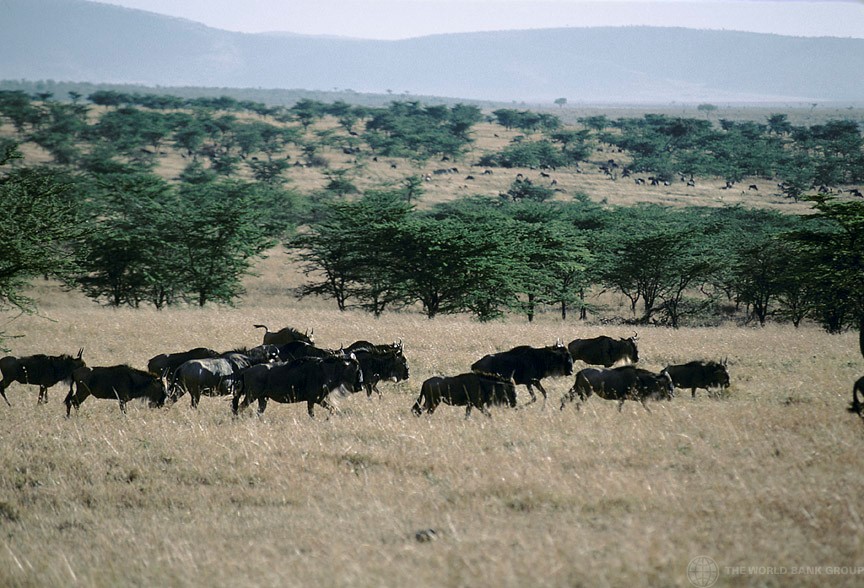
Share
Related Links
When Good Conservation becomes Good Economics : Kenya’s Vanishing Herds
Keywords
Kenya, protected areas, wildlife, Biodiversity, Jobs, poverty, tourism
Kenya Tourism and Sustainability
CHALLENGE
Nature-based tourism makes a significant contribution to exports, GDP, jobs, and poverty reduction in Kenya. But habitat loss, overcrowding at key tourist sites, depleting wildlife numbers, and the ever-present threat of terrorism have generated a perfect storm of problems for the sector.
Recent population monitoring shows that long-term declines of many of the charismatic species that attract tourists – including lions, elephants, giraffes, and impalas - are occurring at the same rates within the country's national parks as outside of these protected areas. This is partly because protected areas in Kenya are far too small to be sustainable. As a result, the wildlife depends as much on land adjacent to a protect area as on the protected area itself. Unfortunately, most of this adjacent land is being converted to other non-compatible uses. The implementation of “ecological easements” offer some promising solutions, but the feasibility of this approach depends upon economic incentives, and the opportunity costs of land.
APPROACH
This activity will focus on a critical and often overlooked threat to the survival of the key wildlife tourist attraction: habitat loss and the need to preserve corridors to assure the long-term sustainability of wildlife and mega-fauna.
First, the activity will investigate land related trade-offs. Is there more to be gained from building a tourism product or converting land to agriculture - in terms of GDP, jobs, and poverty impacts? Second, it will conduct a regional analysis in the Mara region to determine the scope for increasing the payoffs from tourism without undermining sustainability. The Mara has been chosen due to the pressures on this globally significant natural asset and its tremendous potential to generate further conservation-related economic benefits. Finally, the study will also identify the benefits and ecological costs of infrastructure throughout Kenya and thus assist in the planning of corridors and preemptive protection of habitats.
RESULTS
This project has been completed. A report titled When Good Conservation Becomes Good Economics was developed and launched in an event held in Nairobi on December 11, 2019, which was very well attended by a wide cross-section of stakeholders and government officials across numerous departments and ministries.
The report findings highlighted for the first time how wildlife loss causes economic loss in Kenya. It tackled the issue of whether there are trade-offs between wildlife and economic growth, especially given the intensifying pressures on land and natural resources. The report also outlined solutions and a way forward for Kenya to find that the balance between economic development without losing a focus on conservation. The evidence presented in this report suggests that there are wide opportunities to stop the dramatic collapse of wildlife populations and that investing in the tourism sector yields significant benefits which are especially pro-poor. The findings identified a set of tools, developed in this report, which can be used by the planners in order to consider the long-term implications of irreversible decisions and harness the full potential that the country’s natural endowment offers. Following the launch of the report, the Government of Kenya submitted a formal request for technical and financial support to advance the dialog on enhancing protection of wildlife habitats and populations within protected areas and outside of the protected areas
The report findings were used to inform the preparation of Kenya SCD and will be used to provide inputs to the CPF (to be prepared this FY as well). The report was immediately recognized by the stakeholders as a useful tool for advancing the dialog on wildlife conservation with the Government and other stakeholders. As of a result of this analytical activity, the Government of Kenya has invited the Bank to help develop a wildlife strategy.
For stories and updates on related activities, follow us on twitter and facebook, or subscribe to our mailing list for regular updates.
Last Updated : 06-08-2020
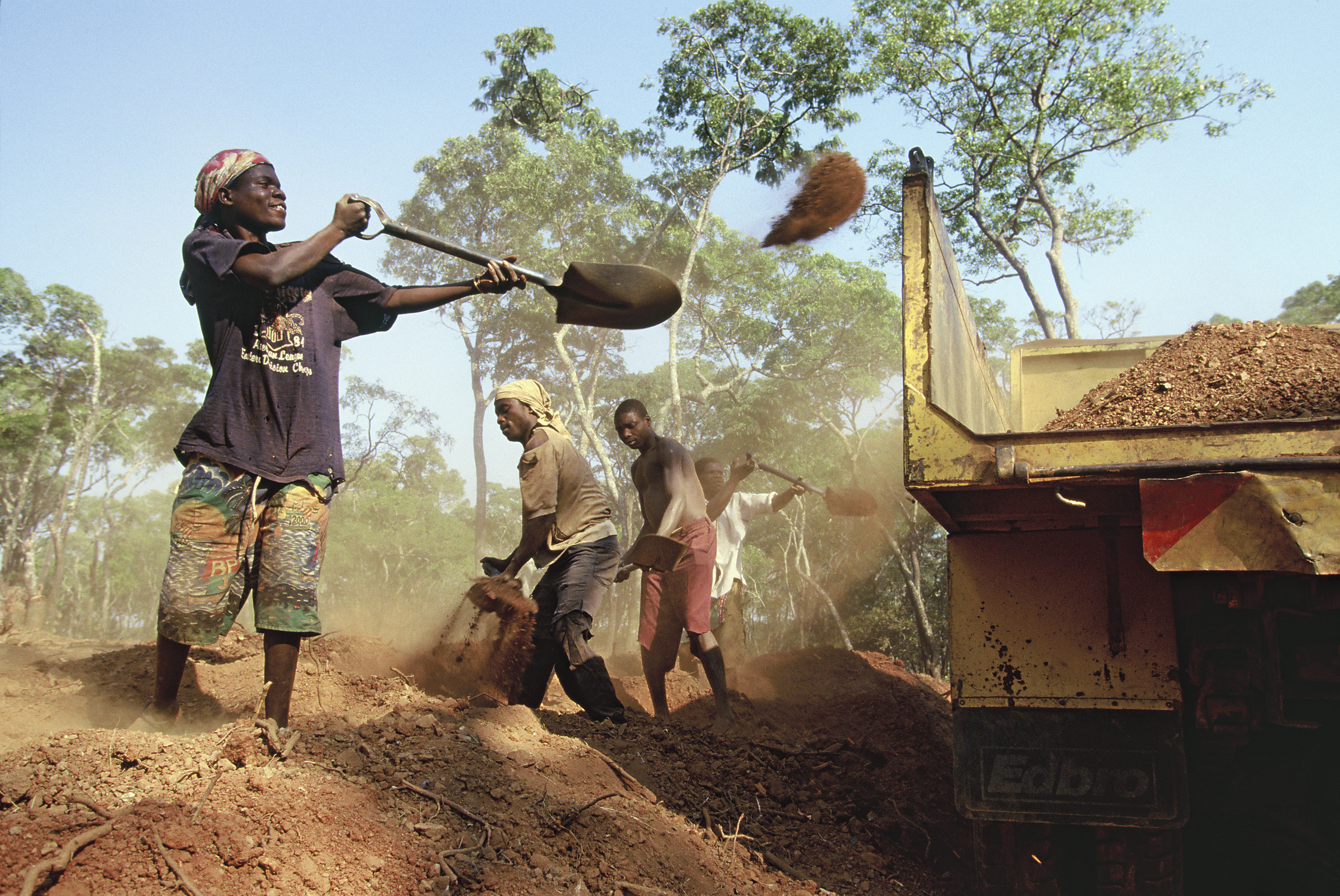
In Mozambique, Government, Conservationists and Private Sector Come Together to Protect Biodiversity
When it comes to protecting our planet’s biodiversity, we can’t afford to not have a plan – especially where environmental impacts are inevitable.
In conservation, the “last resort” option is an approach known as biodiversity offsets. It involves preserving habitat in one area to compensate for unavoidable environmental damage elsewhere, usually as a result of large projects, such as those involving mining or oil and gas development.
“Offsets are based on the ‘mitigation hierarchy’ approach to environmental damage,” explained World Bank Senior Environmental Specialist Douglas J. Graham. “First try to avoid it, minimize it, or restore any affected areas; if nothing else is feasible, look to biodiversity offsets. Where losses simply cannot be avoided but are deemed acceptable, compensate for the losses by protecting similar habitat somewhere else.”
Graham, along with his colleague George Ledec, World Bank Lead Ecologist, has recently been supporting the Government of Mozambique in thinking through what a “last resort” program would look like given the country’s complex conservation challenges. Mozambique is rich in biodiversity but faces tough development issues, including a poverty rate above 50 percent. Biodiversity offsets present a solution for protecting habitats – including providing badly needed funds for Mozambique’s protected areas, which cover 21 million hectares, or 26 percent of the country’s land area – while tapping into valuable natural resources from the mining and petroleum sectors.
National-level biodiversity offset systems are both complicated and without much precedent: Liberia is another African country where this approach is being tested with support from the World Bank. With funding from PROFOR, Graham and Ledec guided a team in Mozambique to put together a Road Map for Mozambique to show how this could be achieved.
“Mozambique is an incredibly interesting place to be implementing biodiversity offsets,” Graham noted. “First, it has very large mining and oil and gas infrastructure projects. Second, private sector companies are required to protect biodiversity in order to comply with international finance regulations [specifically the International’s Finance Corporation’s 2012 Environmental and Social Performance Standards and the Equator Principles]. And third, the Government is very interested in making this a success. The Ministry of the Environment (MITADER) has even shown their commitment by modifying the decrees regulating environmental impact assessments, requiring that large projects result in no net loss of biodiversity.”
The Road Map notes that, far from being a burden to private companies, this new regulation may actually speed up the approval process for new projects by clarifying procedures, giving companies a way forward to comply with national rules and international standards, for which they are increasingly accountable.
Moreover, Mozambique already has an organization capable of operating the offsets program. The Foundation for the Conservation of Biodiversity (BIOFUND), supported under a separate World Bank project, is primed to make the difficult calculations of how much of one habitat is equal to another; to collect and manage funds from private sector companies, and to protect those “equivalent” habitats in perpetuity. BIOFUND also has the responsibility of classifying habitats based on their level of biodiversity, and mapping critical areas where offsets are not appropriate.
“Some habitats are so rare and so important that they shouldn’t be sacrificed,” Graham said. “For example, this appears to be the case with the Swahili coastal forests in northern Mozambique; that ecoregion could be considered a no-go because of its high global biodiversity value and lack of protection.” Biodiversity offsets are never meant to justify development projects that would seriously damage habitats with unique and irreplaceable biodiversity.
Importantly, the initial steps laid out in the Mozambique Road Map are actively taking place, thanks to a proactive MITADER, significant follow-up funding from the Agence Française de Développement (AFD), and World Bank support to BIOFUND.
“This is a great example of a partnership between the government and a willing private sector,” Ledec said. “Very big international companies are involved with investments worth many millions of dollars. They really want to do this, to show to their boards and to the world that they are meeting their commitments. But they can only do this if the money is well used and handled transparently.”
The Mozambique Road Map was produced as a part of the broader PROFOR-supported work on biodiversity offsets, which includes a Global Biodiversity Offsets User Guide to advise the World Bank and other groups on whether, when, and how to prepare and implement offsets. The Mozambique Road Map is available in English and Portuguese.
(Photo: Victor Brott via Sida Swedish Int. Development Cooperation Agency, Flickr CC)
For stories and updates on related activities, follow us on twitter and facebook, or subscribe to our mailing list for regular updates.
Last Updated : 04-01-2018
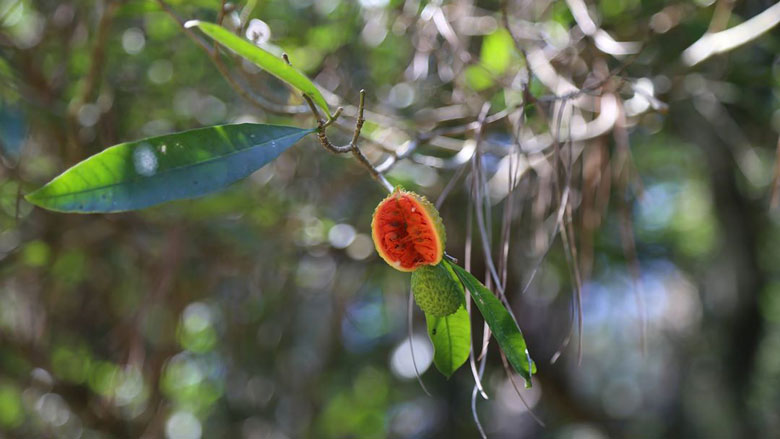
Paraguay conservation of the atlantic forest corridors and landscapes for biodiversity and local livelihoods
CHALLENGE
The Atlantic Forests in Eastern Paraguay have been largely destroyed, with only 15% remaining in protected areas, farmland, indigenous communities’ communal land and private reserves. This remaining forest is under increasing pressure from a variety of forces, including the expansion of intensive agriculture (soy plantations), use of forest biomass as a cheap energy source (by the agroindustry and rural communities) and subsistence agriculture. The current forces affecting the Paraguayan’s landscapes are likely to increase the rate of deforestation and forest degradation in the country, affecting biodiversity, food and energy sources, and likelihoods of local communities and indigenous peoples.
APPROACH
This project will allow to follow-up on the results and lessons learned from the GEF Project Conservation of Biodiversity and Sustainable Land Management in the Atlantic Forest of Eastern Paraguay (P0944335), which has successfully implemented a large number of restoration and reforestation projects with small farmers and indigenous communities from about 200 communities and 55 municipalities in the Atlantic Forest Corridor. This activity will also maintain the on-going policy dialogue on forest restoration and governance with the Government of Paraguay, ITAIPU, the National Forestry Institute (INFONA) and National Indigenous People Institute (INDI).
The main elements of this activity are as follows:
1. Paraguay Atlantic Forest Corridor Threat Assessment. Analyses and evaluation of current and projected trends causing the deforestation in two biodiversity rich areas of the Atlantic Forest Biodiversity Corridor. Such analysis will build on the latest technical studies and those prepared under the Paraguay Biodiversity Project, and information in land use change in forest target areas for biodiversity conservation and livelihoods of local communities (indigenous and rural farmers); analysis of the benefits of forest services and forest restoration to reduce poverty and conserve biodiversity, current forest governance issues and application of forest regulations in the area.
2. Corridor Dialogues. With the results of the in-depth assessment, this activity will provide support to the Ministry of Environment, INFONA (Forestry National Agency) and ITAIPU to engage in a series of Corridor Dialogues with key indigenous communities’ leaders, forest sector authorities, policymakers and stakeholders across sectors, with the aim of reaching consensus on possible mechanisms to improve forest governance, increase conservation and sustain livelihoods of poor indigenous communities in two key biodiversity areas.
3. Plan for Conservation and Restoration of Two High Biodiversity Areas of the Atlantic Forest Corridor. This will include the development of the roadmap for improving coordination among the different institutions and stakeholders of the Corridor; a report on the possible options and mechanisms to promote restoration with native species of high biodiversity and economic values in target areas of the Atlantic Forest Corridor and for improving local likelihoods of rural and indigenous peoples; and identification of potential instruments for sustainable landscape restoration with the participation of the private sector (agribusiness). In addition, an investment plan will be developed for reforestation of high biodiversity value areas in the Corridor and to support landscape restoration projects that can support income to local communities and their likelihoods.
4. Workshops with the participation of indigenous communities, farmers, representatives of the environment and forest sectors, NGOs, national cross-sector policymakers, and others. To date, this activity has carried out three workshops on governance, one dialogue, and five meetings with local stakeholders. More than 100 people have been consulted, of which about one third are women.
RESULTS
This activity is ongoing. Preliminary findings of this activity show that San Rafael, despite the increasing threats and risks over forest land, is still home of biodiversity. The park is home to 427 bird species, which about half of the number for the whole country. The main risks affecting forest conservation in San Rafael are linked to illegal cutting of precious woods (guatambú, lapacho, cedro y laurel) by farmers, external buyer, indigenous communities. There is an urgent need to improve governance and presence of government officials as currently, legislation enforcement is limited. The use of Environmental Management Plans as part of EIA licenses are some of the instruments used to cut the forest in San Rafael.
Implementation has been adjusted due to adverse weather as well political events in Paraguay. However, it is likely that this project had a positive influence on the government’s decision to create new legal categories for conservation areas, namely Biological Corridors and Indigenous Peoples’ Reserves.
For stories and updates on related activities, follow us on twitter and facebook, or subscribe to our mailing list for regular updates.
Last Updated : 06-09-2019
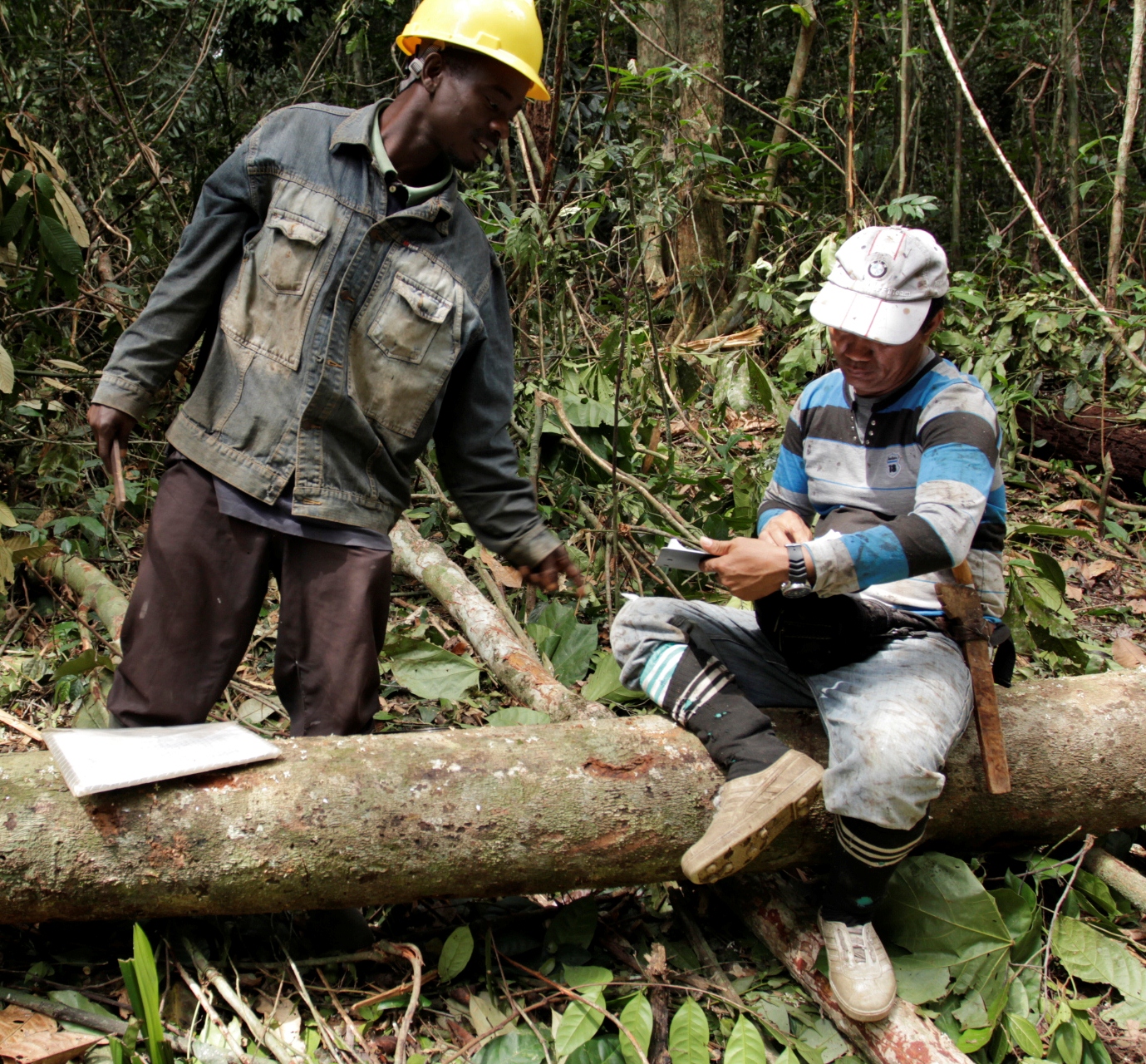
Share
Related Links
Understanding Long-Term Impacts in the Forest Sector: Predictive Proxy Indicators
A Crystal Ball for Forests: Using Today’s Indicators to Predict Tomorrow’s Impacts
Improving the Forests Database to Support Sustainable Forest Management
Assessing and Monitoring Forest Governance
Developing Guidance on Forest Governance Data Collection for Assessment and Monitoring
Impact Analysis of Forest Governance Interventions
Poverty-Forests Linkages Toolkit
Keywords
Biodiversity, climate change, forests, Impact, indicators, poverty, predictive proxies
Authors/Partners
Developing Proxy Indicators to Assess Forests Sector Impacts
CHALLENGE
The international development community is increasingly demanding better evidence regarding the effectiveness of policies and programs across different sectors, and the forest sector is no exception. Governments and donor agencies explicitly seek to link investment to proven impact. Yet, the evidence base necessary to inform policies and programs in the sector that can successfully enhance the livelihoods of forest-dependent poor populations, foster economic growth, reduce emissions from deforestation and degradation, and conserve forest biodiversity remains weak. There is a particular need to identify robust, yet practical, indicators to track and assess the impacts of forest-related investments.
Any attempt to identify such indicators must grapple with two particular challenges in the forest sector. First, forest-related interventions are usually complex, with forestry policies, programs and projects often including multiple objectives, requiring the integration of socioeconomic and ecological expertise, and entailing processes that unfold over different spatial scales. Second, such interventions often take a long time to show results. For example, the results of investments in thinning, tree stand improvement or natural regeneration under sustainable forest management are unlikely to be evident for 10 to 30 years. These characteristics make attribution of impacts to specific interventions (as opposed to other potential factors) especially difficult within the forest sector.
APPROACH
This activity will build from the extensive evidence accumulated within the World Bank’s forests portfolio, PROFOR activities and other relevant donor-supported initiatives to address these challenges and develop guidance on the identification and use of proxy indicators for project impacts. In so doing, the Activity seeks to increase understanding among policymakers, practitioners and applied researchers of the potential short-term proxy indicators for longer-term impacts of forest sector investments and how they may be used in practice.
The Activity began by undertaking an inventory of indicators used by key actors in the sector and reviewing the available literature on proxy indicators (sometimes referred to as “lead” or “predictive” indicators). An in-depth review of the World Bank portfolio of forest operations under the current Forests Strategy (2002-present) and a relevant subset of the PROFOR portfolio lies at the heart of this Activity. Results will provide the core evidence base for a report on predictive proxy indicators (PPIs) and the conditions in which they are likely to be valid. Through this review, the activity will also analyze potential constraints to the use of indicators in donor-supported forest interventions and suggest ways these constraints might be addressed.
RESULTS
The Working Paper "Understanding Long-Term Impacts in the Forest Sector: Predictive Proxy Indicators" is now available (download at left). The main overall finding is that predictive proxy indicators do appear to exist and can be used in practice. Given the complexity and diversity of the forest sector and novelty of the task, this conclusion was far from a certainty when this research began. The authors identified a range of potential PPIs, several of which have already been used in World Bank forest projects. These PPIs focused primarily at the Project Development Objective (PDO) and Global Environment Objective level, although some intermediate-level indicators were identified.
The report argues that robust PPIs can provide an important ex-ante evaluation tool that enables practitioners and researchers to predict future outcomes and longer-term impacts if certain assumptions hold. To help inform the design and implementation of forestry operations and knowledge, we developed a list of top ranking indicators based on an assessment of their predictive potential and their SMART score. These indicators are presented in an indicator menu organized by major objective (that is, relating to poverty, biodiversity, climate, or governance) and including brief notes on how they might be used. The indicator menu is presented as an annex and represents a key product stemming from this analytical work.
This review did not identify any standalone “silver bullet” predictive proxies, but a major contribution is the idea that multiple indicators, considered together, can have strong predictive potential. The report describes a series of seven indicator clusters that form PPIs.
PPIs are already being integrated into new World Bank projects, such as the Argentina Forests and Community Project. This initiative aims to increase access to markets and basic services by small forest producers, including indigenous people and campesinos, in Argentina’s comparatively poor but forest-rich Northern provinces. Activities will focus on helping communities to develop Sustainable Forest Management (SFM) plans and to strengthen their tenure. To assess effectiveness, the project team will collect data on the three indicators under the Sustainable Forest-Related Income PPI. The project will also be assessed using rigorous impact evaluation methods, making it the first forward-looking test case of how well the forestry PPIs perform as predictors of future outcomes.
For stories and updates on related activities, follow us on twitter and facebook, or subscribe to our mailing list for regular updates.
Author : The World Bank [1], PROFOR [2]
[1] http://www.worldbank.org
[2] http://profor.info/
Last Updated : 03-22-2018
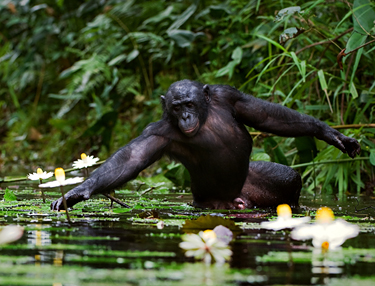
Share
Attachments
OFFSETS-PUBLIC INFORMATION NOTE.pdf
Download
Biodiversity Offset Users Guide
Mozambique Biodiversity Offsets Roadmap (PDF October 2016)
A National Biodiversity Offset Scheme: A Road Map for Liberia's Mining Sector
Trouble in the forest seen through the eyes of orphan bonobos
Balancing Mining Development and Forest Conservation in the Congo Basin
Digging In: New Opportunities for Mining and Conservation in Africa
Public information note about the study (PDF Sept 2013)
Authors/Partners
World Bank Africa Region
Biodiversity Offsets Toolkit and Sourcebook
CHALLENGE
In many African countries, native forests are under pressure from rapidly-spreading roads, dams and other infrastructure, as well as the allocation of large forest areas to mining, commercial agriculture, and other non-forest uses. Biodiversity offsets are one of the tools available to address such pressures. Offsets can be used to strengthen protected areas of similar or greater conservation value than the area lost to specific projects. The driving impetus for such offset schemes is usually biodiversity protection, although the associated conservation areas provide additional ecosystem services such as soil and water conservation, flood mitigation, and habitat for sustainably exploitable fisheries. In an era of often flat -- and sometimes declining -- governmental support for forest conservation in general and protected areas in particular, biodiversity offsets provide an underutilized opportunity to mobilize substantial new funding from public infrastructure accounts as well as the private sector.
Biodiversity offsets are not a panacea, nor are they always the best tool available for achieving forest conservation. As part of the “mitigation hierarchy” underpinning the World Bank’s Safeguard Policies and the IFC’s Performance Standards, offsets are considered a last resort, after efforts to avoid, minimize, and restore any significant damage to forests or other natural habitats. Nonetheless, given that many infrastructure, extractive, and other large-scale projects have an inherently large footprint, a biodiversity offset scheme may be warranted (and required by some funding entities).
A key challenge is systematizing and scaling-up biodiversity offsets through a national or other aggregated offset approach in order to overcome limitation like: (i) the high transaction costs often borne by each separate project; (ii) sub-optimal selection of conservation offset areas due to uncoordinated, ad-hoc approaches; and (iii) insufficient participation and ownership by governmental authorities in arrangements negotiated primarily between large private firms and conservation NGOs. The cumulative impacts of multiple (including smaller-scale) projects could also be more effectively addressed through an aggregate offset approach.
APPROACH
Under this activity, the team produced a Biodiversity Offsets User Guide containing key information about biodiversity offsets that practitioners should know about, with references provided where readers could obtain further information. Three case studies of reasonably successful biodiversity offsets were added to the User Guide as annexes. The case studies involved two private sector mining projects (in Liberia and Madagascar) and one World Bank-supported hydropower project (in Cameroon). These case studies are intended to show readers how the concepts explained in the User Guide can realistically be applied to achieve positive results on the ground.
In addition, in response to a strong expression of interest from the Government of Mozambique, this activity also provided legal technical assistance for incorporating biodiversity offsets into the Government’s official Environmental Impact Assessment (EIA) process. Two reports were produced: (i) An analysis of Mozambican environmental legislation with respect to the use of biodiversity offsets; and (ii) a draft revision of the actual EIA regulations.
Finally, two pilot Country Roadmaps were completed to assess the potential for large-scale biodiversity offset systems in Liberia and Mozambique. The Roadmaps are intended as preliminary country examinations of legal and regulatory frameworks, national policies, land use plans, financial structures, and other relevant information.
RESULTS
The research team found that multiple detailed publications already exist about the details and controversies of biodiversity offsets, but that a concise reference with practical advice on how actually to do them was still lacking. This is the void that the Biodiversity Offsets User Guide seeks to fill.
The Liberia Biodiversity Offsets Roadmap emphasizes industrial-scale mining. Since adequate funding for Liberia’s protected areas remains a challenge, biodiversity offsets offer the potential for improved financial sustainability. The Liberia Roadmap outlines a series of steps for scaling-up biodiversity offsets in Liberia; among the most important is the establishment of a national Conservation Trust Fund to enable the reliable and transparent transfer of funds from extractive firms to priority Protected Areas. The new Liberia Forest Sector (REDD+) Project, approved in April 2016 with support from the World Bank and Government of Norway, provides a vehicle for moving forward the Roadmap’s key recommendations.
In Mozambique, existing Conservation Areas (CAs) cover about 26% of the country’s land area, and encompass most types of terrestrial and aquatic ecosystems. However, most are seriously underfunded. The Mozambique Biodiversity Offsets Roadmap (also available in Portuguese) proposes using Mozambique’s BioFund to transfer biodiversity offsets funding from infrastructure and extractive industry projects to selected CAs that are ecologically similar to the project-affected areas. Implementation has begun of the Roadmap’s recommendations, through the Government’s recently revised Environmental Impact Assessment Regulations.
For stories and updates on related activities, follow us on Twitter and Facebook, or subscribe to our mailing list for regular updates.
For stories and updates on related activities, follow us on twitter and facebook, or subscribe to our mailing list for regular updates.
Author : World Bank Africa Region
Last Updated : 02-28-2017
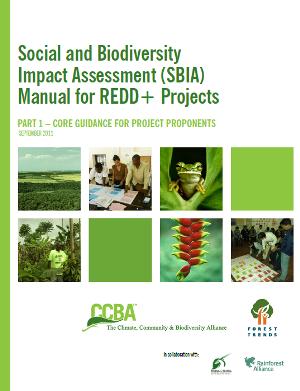
Share
Attachments
Report on SIA Case Studies for PROFOR_0.pdf
Annex 1 Surui Carbon Project SIA Case Study 2011_small_0.pdf
Annex 2. GuateCarbon, Guatemala SIA Case Study 2011 Edited_small_0.pdf
Annex 3. CCAH, Peru SIA Case Study 2011_small_0.pdf
Keywords
Authors/Partners
Authors: Forest Trends' Michael Richards and Steve Panfil with key inputs by Nigel Pitman, Steven Price, Natasha Calderwood and Julie Fischer.
Partners: Forest Trends and CCBA, with Rainforest Alliance and Fauna & Flora International (FFI).
Sponsors: PROFOR, Morgan Stanley, USAID-TransLinks, GEF-UNDP, Rockfeller Foundation and NORAD provided financial support.
Social Impact Assessment of Forest Carbon Projects (toolkit)
CHALLENGE
Are land-based carbon projects good for local people?
Many rural communities are keen to embark on carbon projects as a way of generating income, jobs, and other social benefits. Offset buyers are also attracted to the idea of reducing emissions and simultaneously helping local people. Others are wary that these projects may do more harm than good. However, until recently, there was no clear methodological guidance for carbon project developers to track social and biodiversity impacts. The combination of robust standards for assessing the social performance of projects, and the use of credible methods of social impact assessment could help ensure positive outcomes for local people.
The emphasis in the early years of the carbon markets has been mainly on assuring the integrity of project emission reductions; co-benefits have received much less attention. But the balance is changing, and there are justifiable concerns that co-benefits must, like carbon, be real, ‘additional’ and, as far as possible, measurable. This is partly necessary for market confidence as offset buyers increasingly seek evidence that they are getting what they pay for, including co-benefits. On ethical or equity grounds, carbon projects must at the very least ‘do no harm’ (See related IIED conclusions on REDD+ in the miombo drylands.)
A cost-effective and credible impact assessment toolbox would help carbon project developers meet the verification requirements of the Climate, Community & Biodiversity (CCB) Standards and contribute to building more robust, sustainable projects.
APPROACH
In response to such issues, Forest Trends has formed an alliance with three other NGOs – the Climate, Community and Biodiversity Alliance (CCBA), Rainforest Alliance, and Fauna & Flora International (FFI) – to produce a user-friendly Manual for project proponents on how to conduct cost-effective and credible social impact assessment. Support for this project comes from PROFOR, Morgan Stanley, NORAD, GEF-UNDP, and USAID-Translinks.
The manual is intended for carbon offset project designers and implementers who are not specialists in monitoring and evaluation (M&E).
The Manual was field-tested in 2010 in Brazil, Guatemala and Peru.
RESULTS
Forest Trends released a first version of its manual in June 2010, proceeded to test it in the field (see case studies listed on this page) and solicited feedback. A second version, which integrated biodiversity concerns as well, was released in the fall of 2011 in three parts: a core guidance document and two toolkits (for social and bioversity impact assessments).
Guidance to project developers has been provided by regional training workshops held in Peru (June 2010), Tanzania (October 2010), Kenya (August 2011 with GEF-UNDP funding) and DRC (September 2011 with USAID-Translinks funding). This has resulted in training of approximately 80 terrestrial carbon project developers and other REDD+ stakeholders from about 10 countries. These workshops involved hands-on training using ‘real’ REDD+ projects as case studies over a period of 3-4 days.
In Tanzania, the Tropical Forest Conservation Group (TFCG) REDD project in Lindi District has undertaken a large scale SIA exercise in 2011 following their participation in the SIA Training workshop in Zanzibar in October 2010.
FINDINGS
Experience during field testing and further training in social impact assessment shows that the benefits of using the ‘theory of change’ approach to impact assessment go well beyond the generation of a credible social monitoring plan which can meet the CCB or other multiple benefit standards. These wider benefits include: strategic project design necessary for achieving social and biodiversity objectives (clear objectives are essential for identifying monitoring indicators); participation of project stakeholders; promotion of adaptive project management; and the ease of understanding and explaining the results to a range of stakeholders.
Keys to better participation of local stakeholders include the quality of the ‘focal issue working group’ facilitators (so the latter need to be more carefully selected and trained); some prior training or exposure for community participants; the use of a ‘practice activity’ to develop good practice consultation skills; and various issues around the more effective participation of local stakeholders, especially women.
Based partly on the costs in the three case studies, the authors estimate that the cost of generating a credible social monitoring plan using their approach will be in the range $25,000-35,000 depending on various factors.
For stories and updates on related activities, follow us on twitter and facebook, or subscribe to our mailing list for regular updates.
Author : Authors: Forest Trends' Michael Richards and Steve Panfil with key inputs by
Nigel Pitman, Steven Price, Natasha Calderwood and Julie Fischer.
Partners: Forest Trends [1] and CCBA [2], with Rainforest Alliance and
[3]Fauna & Flora International [4] (FFI).
Sponsors: PROFOR, Morgan Stanley, USAID-TransLinks, GEF-UNDP, Rockfeller
Foundation and NORAD provided financial support.
[1] http://www.forest-trends.org/
[2] http://www.climate-standards.org/
[3] http://www.rainforest-alliance.org/
[4] http://www.fauna-flora.org/
Last Updated : 02-24-2017
Share
Related Links
Powerful alliance to fight wildlife crime comes into effect (Press Release, Nov. 2010)
Keywords
Authors/Partners
The International Consortium for Combating Wildlife Crime (ICCWC) -- a partnership of the World bank, the World Customs Organization, INTERPOL, the UN Office on Drugs and Crime and the CITES Secretariat.
Establishing a Network of Controlled Delivery Units for Forest Law Enforcement
CHALLENGE
Although international trade in stolen timber and other forest products, including wildlife, is recognized as an important component of the global forest law enforcement and governance challenge, relatively little attention has been devoted to developing the capacity to intervene effectively to counter illegal international supply chains, to prosecute criminal enterprises and individuals, and to thereby deter the illegal trade.
Controlled Delivery (CD) is the technique of allowing illicit or suspect consignments to pass out of, through or into the territory of one or more countries, with the knowledge and under the supervision of competent authorities, with a view to identifying persons involved in the commission of offenses. This technique is routinely used by law enforcement agencies in many sectors to identify persons connected with criminal activities related to the smuggling of contraband and to gather evidence against them. Apart from seizures of the contraband, the technique may also be used to bring the syndicates involved in timber and wildlife smuggling to justice.
However few developing countries' Forestry, Customs and related law enforcement agencies are prepared to engage in such operations in relation to forest products, mostly due to lack of confidence, lack of capacity and poor cooperation with colleagues from other agencies/countries. Smugglers benefit from this situation.
APPROACH
The project objective is to reduce international trade and trafficking in illicitly obtained forest products, especially but not only timber, by developing and mobilizing a collaborative network of Customs and forest law enforcement agencies and officials. By equipping this community of practice with knowledge of the controlled delivery technique and by building relationships, communications channels and confidence in the integrity and intention of members of the community of practice, the project will help to establish the credibility of Customs enforcement and increase smugglers' perceptions of the risk of detection and apprehension.
A manual on controlled deliveries, developed by INTERPOL, the CITES Secretariat and the WCO (World Customs Organization) , will be used as the basic training material for this activity. Distribution of the Controlled Deliveries Manual has been limited to Customs and law enforcement agencies via WCO and INTERPOL restricted access networks. This will be the first face-to-face training program based on the manual and the first ever to focus on forest-related contraband.
RESULTS
This activity is ongoing.
A workshop bringing together 50 participants from 18 African and Asian countries (officials from the police, Customs or judiciary) and experts from the World Bank, the World Customs Organization (WCO), INTERPOL, the UN Office on Drugs and Crime (UNODC) was held in Shanghai, China on December 7-8, 2011. The workshop covered forest and wildlife crime and law enforcement in China, global wildlife and timber smuggling routes, wildlife and timber methods of detection, controlled delivery techniques (including financial aspects), prosecution, as well as group activities aimed at building a network of practitioners. A followup report will monitor participants' future collaboration and possible conduct of controlled delivery operations.
Findings will be shared on this page as they become available. You can follow us on twitter or join our mailing list for regular updates.
For stories and updates on related activities, follow us on twitter and facebook, or subscribe to our mailing list for regular updates.
Author : The International Consortium for Combating Wildlife Crime (ICCWC) -- a
partnership of the World bank, the World Customs Organization, INTERPOL, the
UN Office on Drugs and Crime and the CITES Secretariat.
Last Updated : 02-24-2017
